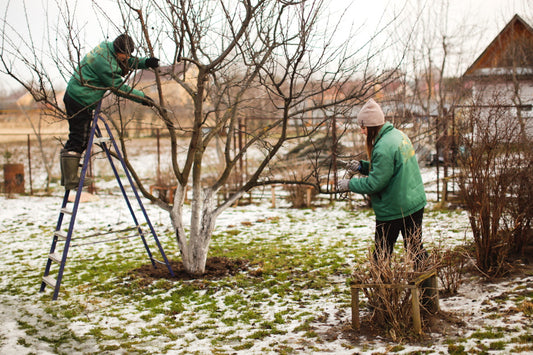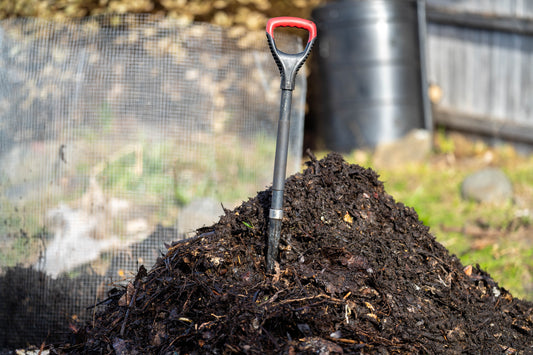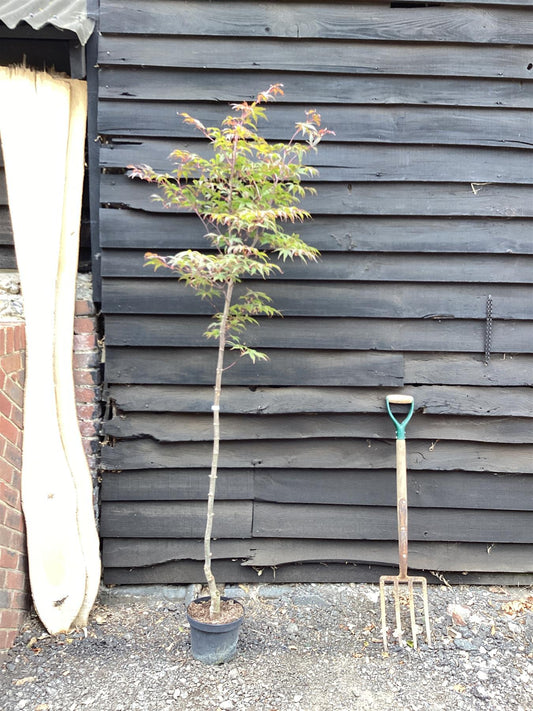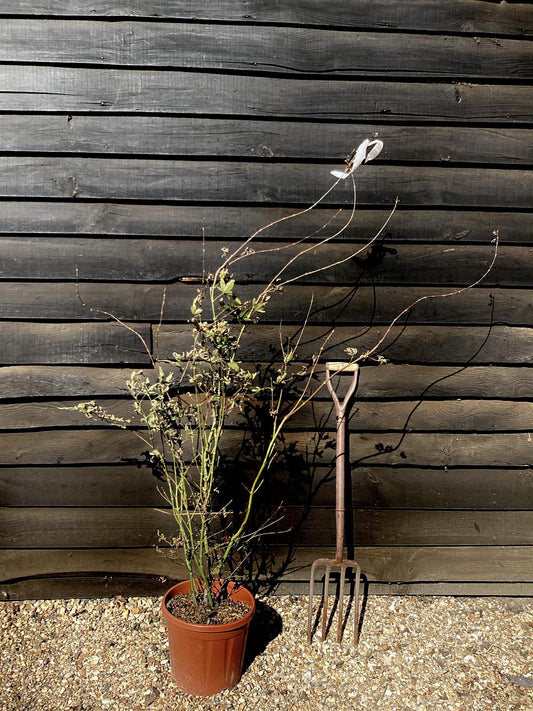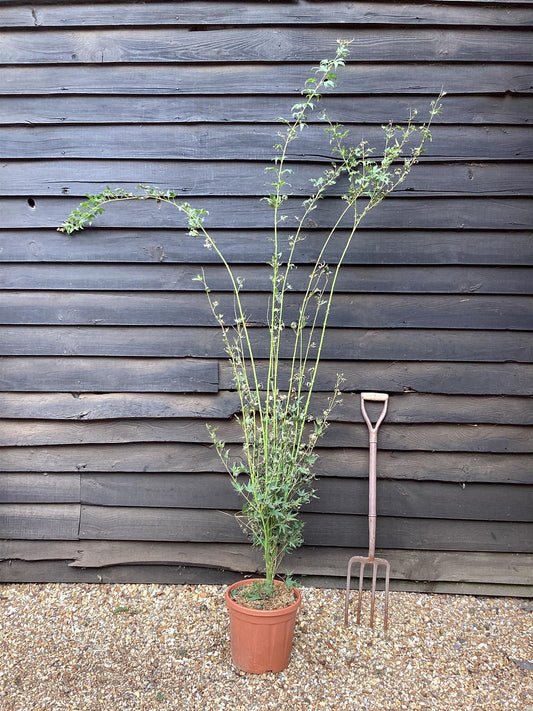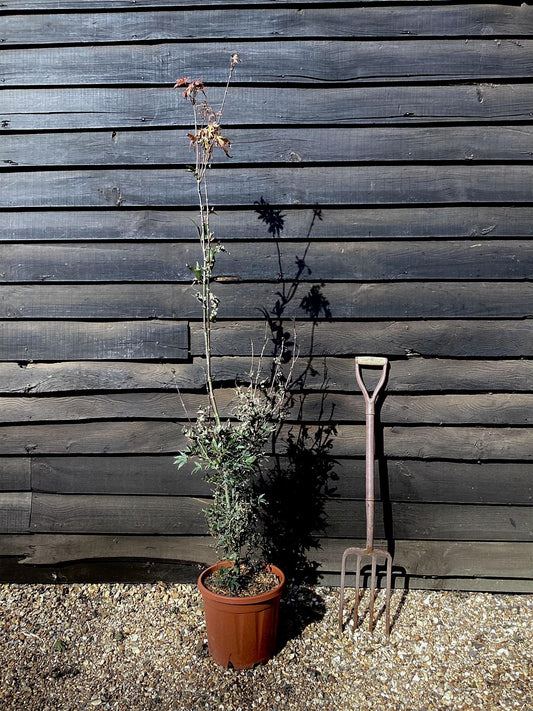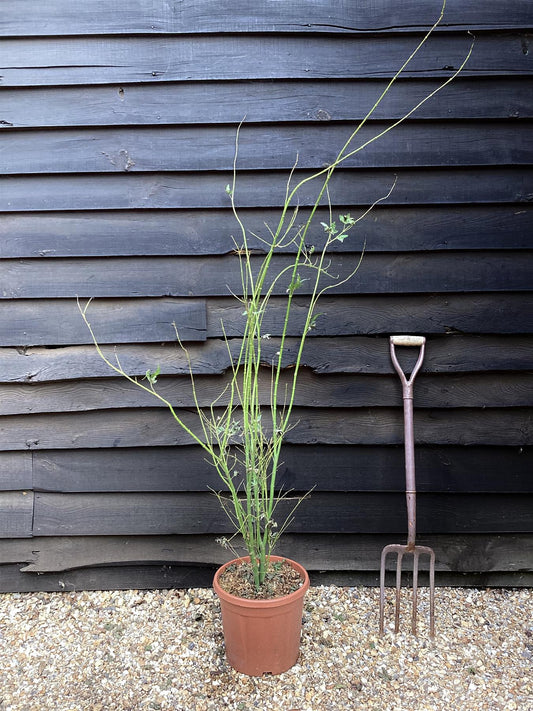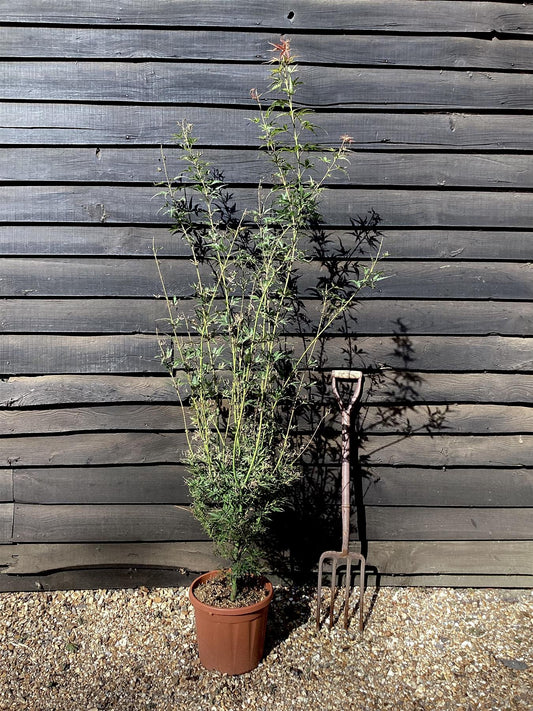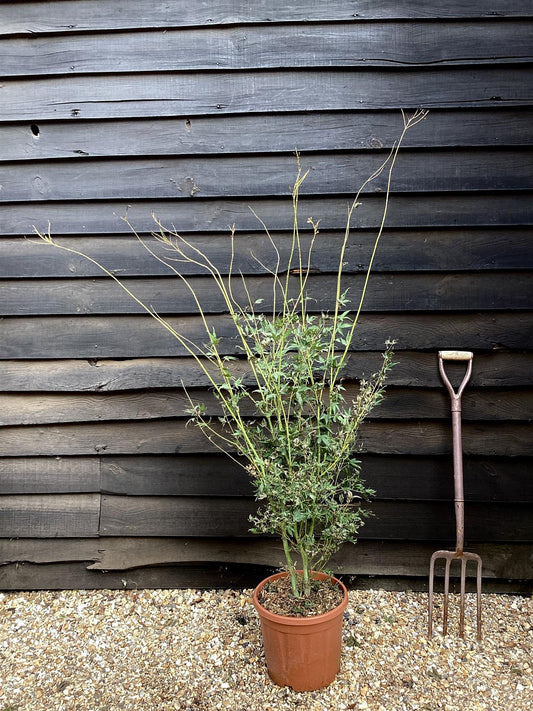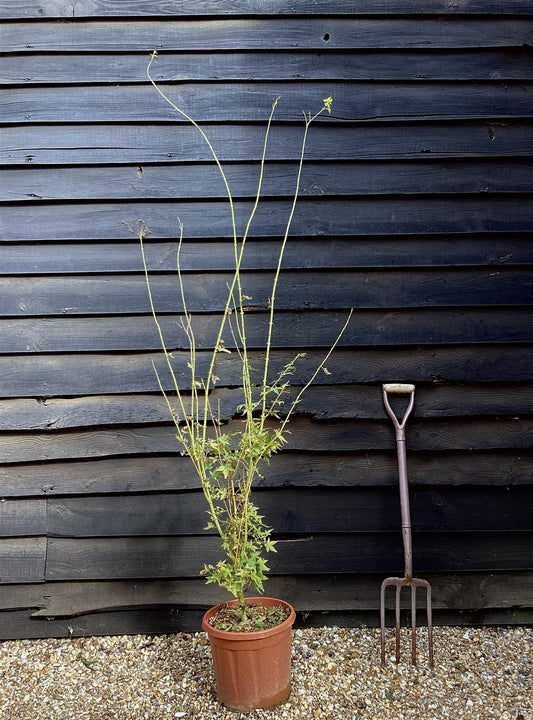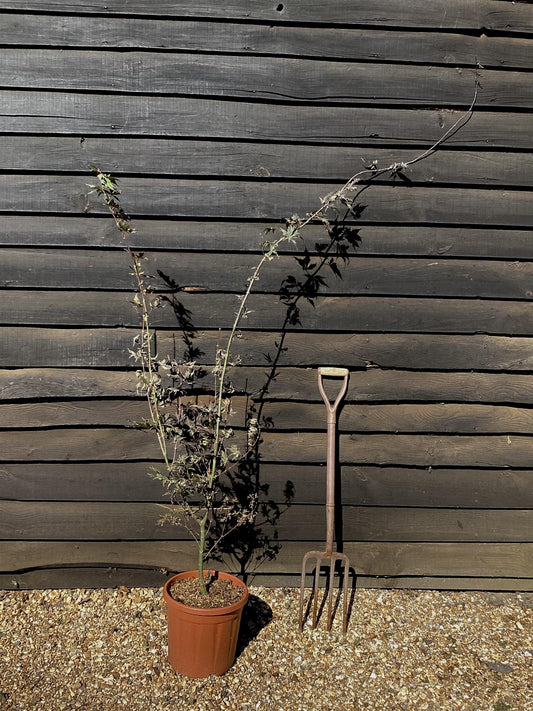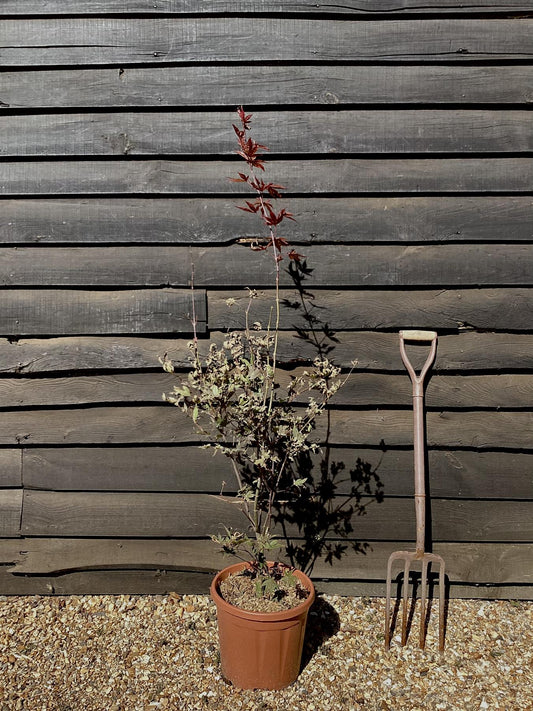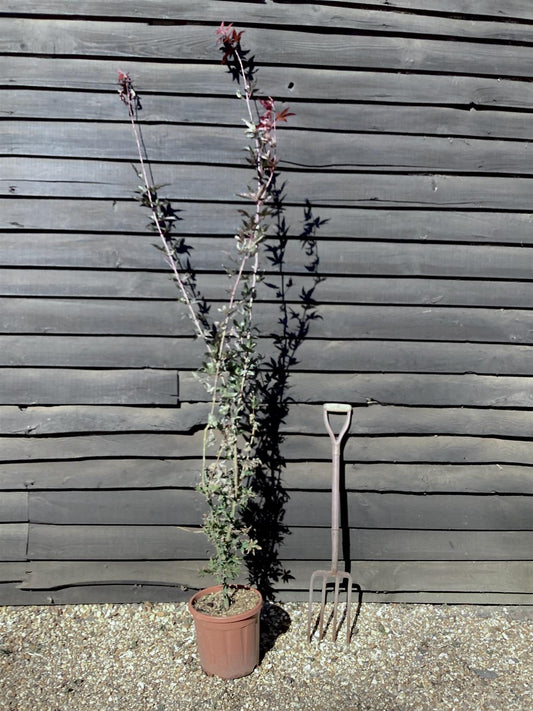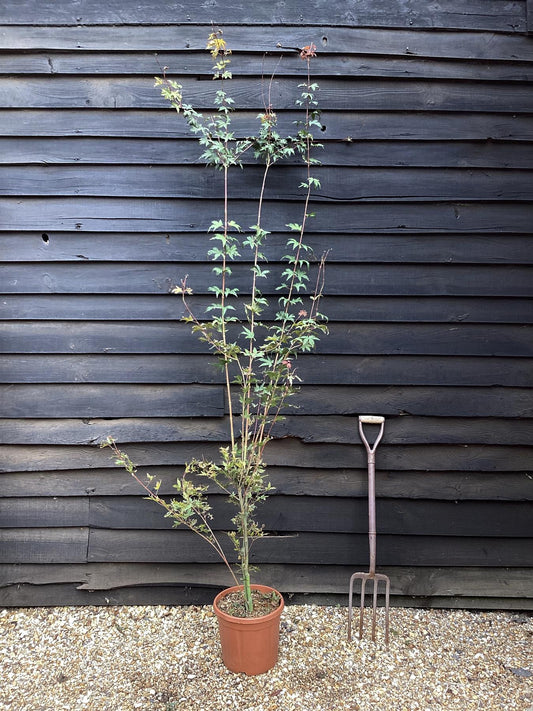Are you looking to plant a deciduous tree that will provide stunning spring blossom, have mid-green, pinnate leaves and an array of autumn colours? Sorbus trees (Moutain Ash\Rowan) are a group of deciduous trees that provide a good deal of interest for most of the year, and would make an ideal choice if you were looking to source a specimen plant for your garden.
Most Sorbus varieties have pretty, pinnate leaves. These are complemented by delicate spring blossom – either white or pinks and stunning autumn berries. These can be white, yellow, pink, red or brown – depending upon the variety of tree. There is a great variety to choose from to encourage wildlife into your garden – blackbirds, robins and thrushes will all love the nutrient-rich berries! These trees also make an ideal choice for a small or medium sized garden. Most varieties of Sorbus are fully hardy in the United Kingdom.
Planting and Growing Sorbus trees
The best time to plant trees and shrubs is during the planting season which, depending upon the weather, usually runs from November – March. This is the time of year when bare rooted and rootball trees should be planted. Trees and shrubs establish themselves better over the winter months, but if you are buying your tree in a container, it can be planted all year round. However, you must remember that maintenance is key – especially in the first two years.
Sorbus trees are tolerant of pollution and they make an excellent choice if space is limited.
Care of your Sorbus
Sorbus trees are easy to grow and once they are established, they are low maintenance too. They rarely require a prune – but a light prune or thinning to maintain their shape during the winter can be undertaken if required.
At Arundel Arboretum, we have an excellent selection of specimen plants in stock, including many varieties of Sorbus. To help get you started, you may like to consider one of the following:-
Sorbus cashmiriana

Sorbus cashmiriana is native to the western Himalayas, which includes Kashmir. Clusters of pale pink or white flowers appear in late spring. These are followed by large clusters of white berries. In periods of good weather, the berries can last on the trees well into the winter. Sorbus cashmiriana will grow happily in full sun or partial shade. An excellent choice for a small garden.
Sorbus aucuparia ‘Chinese Lace’

Sorbus aucuparia ‘Chinese Lace’ is a small, deciduous variety of Sorbus with a rounded head. Its deeply cut dark green leaves turns purple-red in the autumn. During the spring, single white flowers appear. These are followed by clusters of dark red fruits. Sorbus aucuparia ‘Chinese Lace’ is an ideal tree to consider for a small garden with an eventual height and spread of 3m x 2m. It is a hardy variety and tolerant of pollution and can also cope with some coastal conditions.
Sorbus ‘November Pink’

Sorbus ‘November Pink’ has a broadly columnar growth habit. Its green-blue pinnate leaves turn red-orange in the autumn. Clusters of fragrant, white flowers appear in late spring. These are followed by round, pale pink fruits that fade to white going into the winter. It has an eventual height and spread of 10m x 8m.
Sorbus aucuparia ‘Autumn Spire’

Sorbus aucuparia ‘Autumn Spire’ has an upright growth habit. White flowers appear in spring and these are followed by yellow berries in the autumn, which are loved by the birds! Its dark green pinnate leaves turn a spectacle of red and yellow in the autumn. This variety is also one to be considered for polluted or exposed areas, but wet or waterlogged ground should be avoided. An ideal choice if you are looking for a tree to attract wildlife.
Sorbus hupenhensis ‘Pink Pagoda’

Sorbus hupenhensis ‘Pink Pagoda’ is a compact, medium sized deciduous tree. It produces creamy-white flowers in late spring, which are popular with bees. The flowers are followed by rose-pink berries which turn a paler pink in the winter. The grey/blue-green leaves turn red-orange in the autumn.


